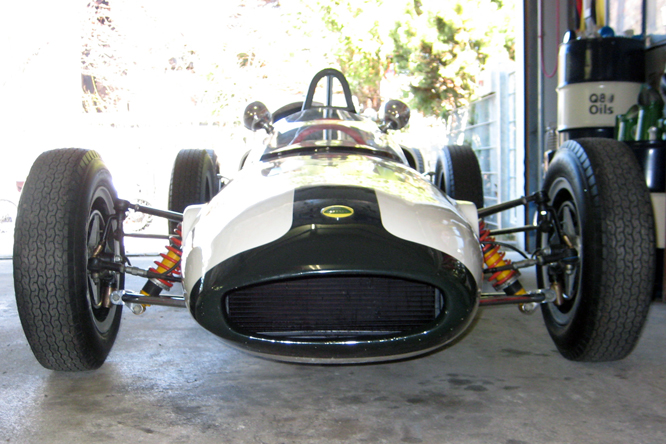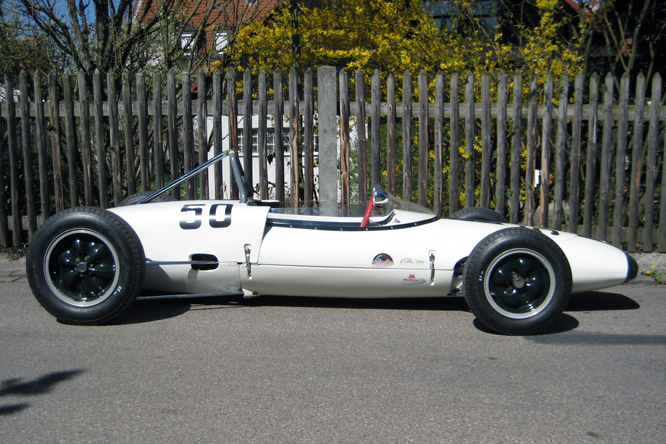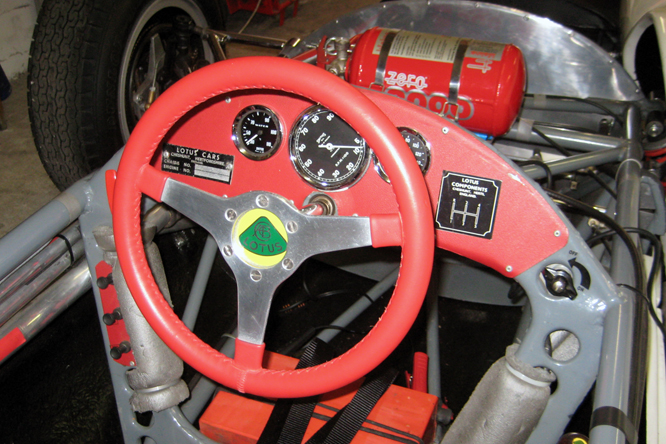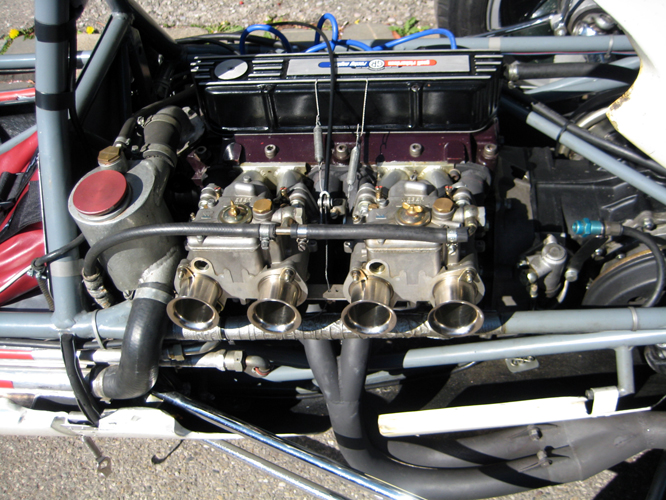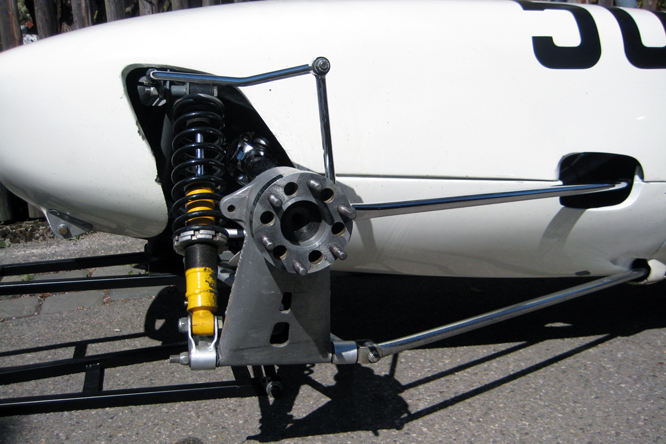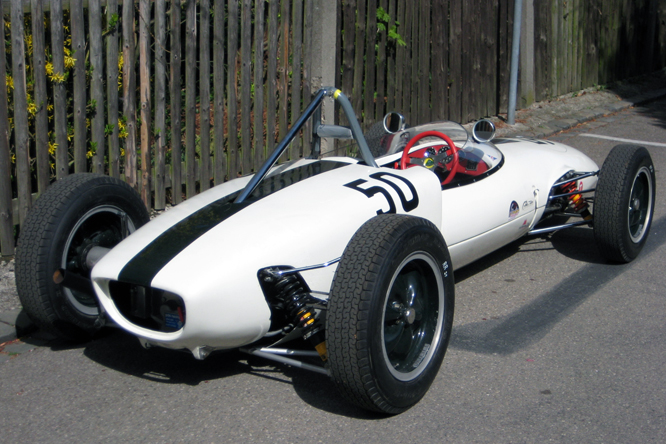The Aston Martin DB3 was designed to compete at Le Mans in 1951 by ex Auto Union D-Type designer Eberan von Eberhorst. Ten cars were built the first five for the factory team, who’s most notable success was a victory in the 1952 Goodwood 9 hour race won by Peter Collins and Pat Griffith.
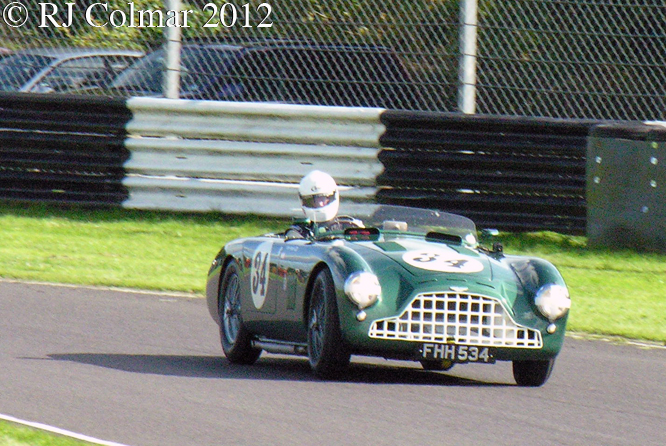
Originally the DB3’s used the 133 hp Vantage version of the 2.6 litre / 158 cui straight six designed by W O Bentley for Lagonda that was also used in the Aston Martin DB2. However despite the win at Goodwood in 1952 this motor proved uncompetitive when run against the 3.4 litre Jaguar C-Typesand eventually a 2.9 litre / 178 cui straight six was introduced to the model. Later still the DB3 was replaced by the lighter DB3S.

This particular chassis #DB3/6 was the first of the customer cars is known to have been raced by Bob Dickson in 1953, with the FHH534 registration plate, when he scored a best finish of 5th with Desmond Titterington at Dundrod in the Tourist Trophy. Bob is also known to have won his class in the 1953 Rest And Be Thankful Hillclimb which ran at Glen Croe in Argyll, Scotland.
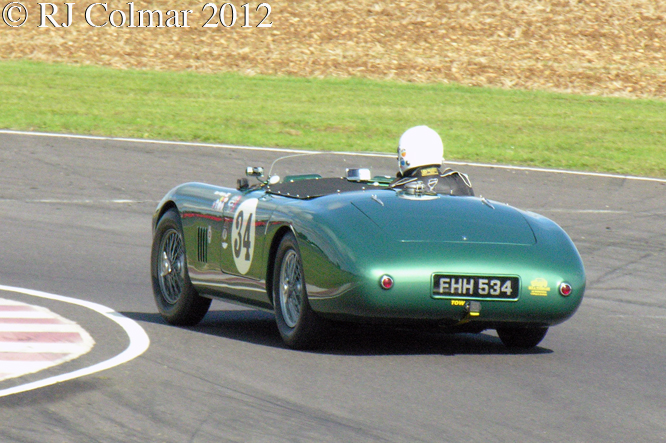
The following season R H Dennis acquired #DB3/6 and took part in at least won event at Goodwood in September 1954 where he finished 6th. By this time the car had been fitted with a larger 200hp Jaguar motor, acquired a hard top, first seen on the works racer #DB3/1 at Le Mans in 1952 and had large sections of body work removed from behind the front and rear wheels.
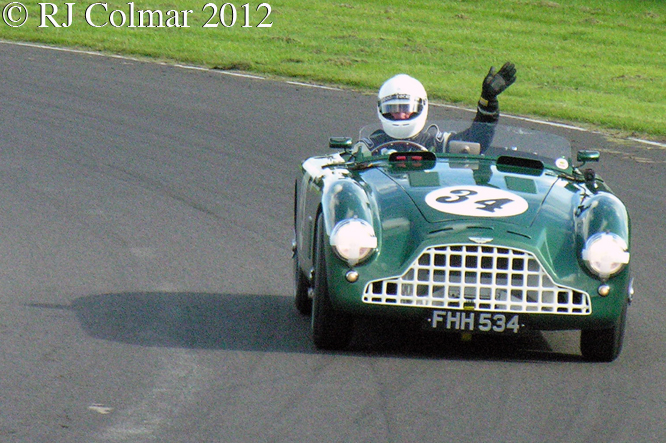
Dennis raced the #DB3/6 until mid way through 1956 without much success and then entered Geoff Richardson for at at least three events at Mallory and Goodwood in which he finished 2nd, 3rd and 2nd before the car vanished from the known racing records.
The DB3’s body could be removed in twenty minuets and this may have had a role being fitted with a bizarre two tone body, initially with conventional doors, and later with gull wing doors and a third headlight.
In 1965 it was all change again as #DB3/6 was united with an Aston Martin motor and the body was swapped for again with the body from a 1957 Aston Martin DBR2.
In 1989 #DB3/6 was sold for a £180,000 pounds without anybody work or even a motor, 14 years later the gullwing body also passed through auction. #DB3/6 is seen in these photo’s with a 2.9 litre / 178 cui Aston Martin 6 cylinder motor being driven by Chris Woodgate on his way to victory in the Historic Aston Martin race at Castle Combe last year.
During the research for today’s post I stumbled across the Aston Martin Scrap Book which I can heartily recommend to anyone interested in the marque and one off Aston Martin bodies.
Thanks for joining me on this “Cat Under The Bonnet !” edition of “Gettin’ a li’l psycho on tyres” I hope you will join me again tomorrow for a look at another racing Aston Martin, albeit from an altogether more recent era. Don’t forget to come back now !


